SOMETHING’S MISSING
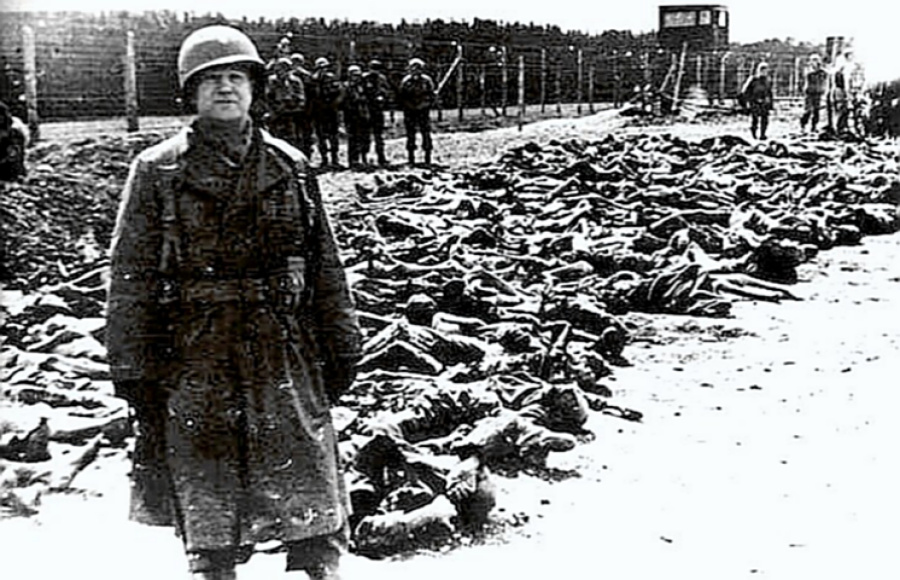 Many of the world’s most prolonged and heinous injustices have historically gone on unchallenged because they were concealed from public view. Only when a professional journalist was able to bring the injustice into public view was the injustice stopped. We think of U.S. forces freeing Jewish Nazi prisoners of war in the Buchenwald and Dachau Concentration camps who were shocked at what they found. Their photographs appalled not just Americans, but the world. (One wonders whether America would have entered the War earlier if they had been made aware earlier of what had been happening?)
Many of the world’s most prolonged and heinous injustices have historically gone on unchallenged because they were concealed from public view. Only when a professional journalist was able to bring the injustice into public view was the injustice stopped. We think of U.S. forces freeing Jewish Nazi prisoners of war in the Buchenwald and Dachau Concentration camps who were shocked at what they found. Their photographs appalled not just Americans, but the world. (One wonders whether America would have entered the War earlier if they had been made aware earlier of what had been happening?)
Who can forget the 1972 Associated Press photographer Nick Ut’s photo of Kim Phuc fleeing naked across a Vietnamese bridge? When the 1973 Pulitzer Committee awarded Nick its prize, it signalled the end America’s involvement in the Vietnam War. These samples illustrate why a free-press is essential to the execution of proper justice, and just how powerful images are to change the hearts and minds of people who were previously indifferent about the matter.

SPOTLIGHT
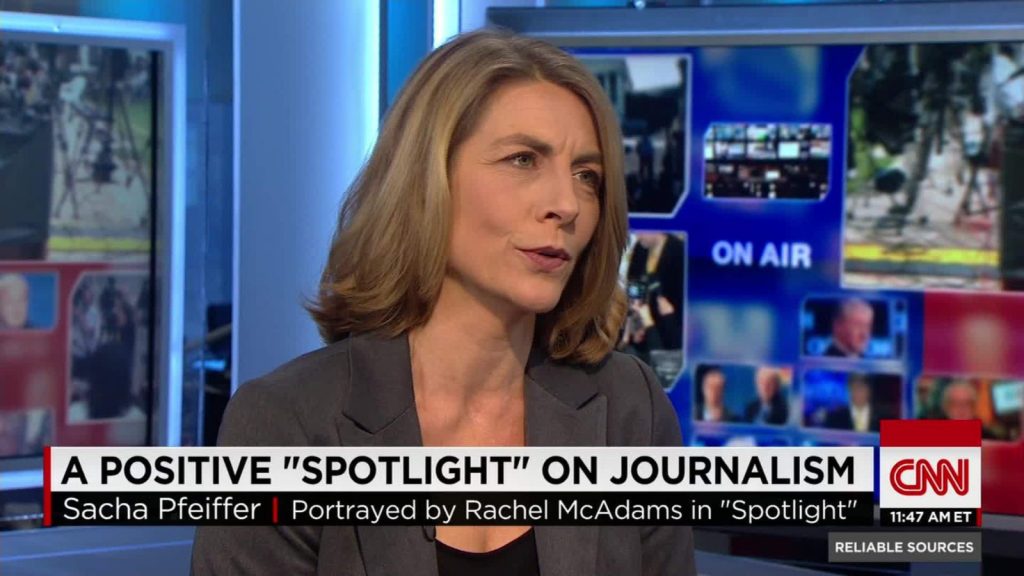 One of the last truly investigative journalism endeavours was done by the Spotlight Team of the Boston Globe, the oldest continuously operating newspaper investigative journalist unit in the United States. A team of journalists spent 18 months investigating a major cover-up of child sexual abuse. When they began publishing their exposés over a series of weeks, the ramifications were felt around the world for the next 16 years! Their work earned them the 2003 Pulitzer Prize for Public Service.
One of the last truly investigative journalism endeavours was done by the Spotlight Team of the Boston Globe, the oldest continuously operating newspaper investigative journalist unit in the United States. A team of journalists spent 18 months investigating a major cover-up of child sexual abuse. When they began publishing their exposés over a series of weeks, the ramifications were felt around the world for the next 16 years! Their work earned them the 2003 Pulitzer Prize for Public Service.
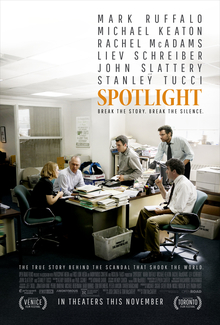 Their investigation brought public awareness of the issue of institutional child sexual abuse but this was markedly broadened by the 2015 Hollywood movie, Spotlight, directed by Tom McCarthy, was made about their investigation. It won the 2016 Academy Award for best picture and introduced the horrific story they uncovered to a global audience. Their work has reminded us all just how important truth-telling is for effecting justice – despite the enormous institutional opposition and resistance encountered.
Their investigation brought public awareness of the issue of institutional child sexual abuse but this was markedly broadened by the 2015 Hollywood movie, Spotlight, directed by Tom McCarthy, was made about their investigation. It won the 2016 Academy Award for best picture and introduced the horrific story they uncovered to a global audience. Their work has reminded us all just how important truth-telling is for effecting justice – despite the enormous institutional opposition and resistance encountered.
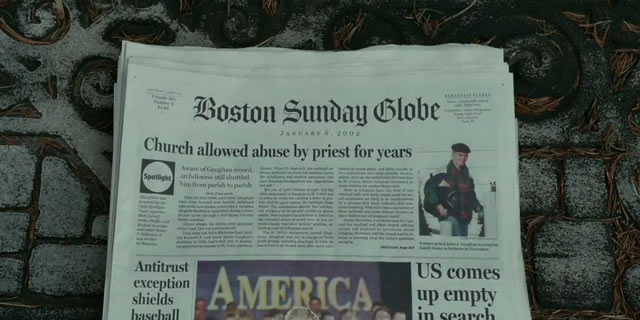
.
ALICE HARRIS’S PHOTO THAT BROUGHT DOWN A EUROPEAN KING
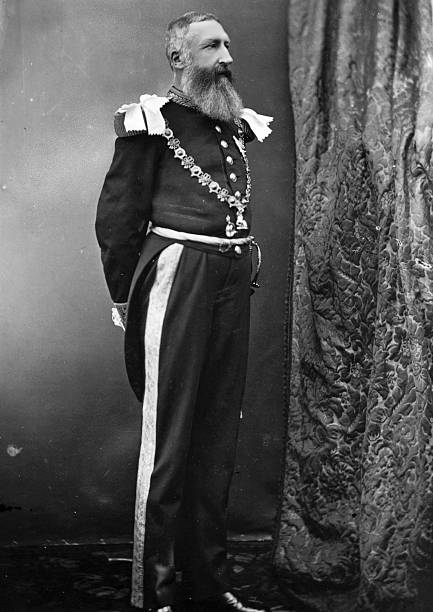 The work of the Spotlight team illustrates the power of literary journalism to expose evil and injustice. The movie depiction of their investigation reenacted the pain, devastation and even deaths which resulted from this evil and conveyed this in a way that only images could. But uncovering evil and injustice has not been the exclusive domain of professional journalists and photographers. From the late 1800s King Leopold II of Belgium was conducting a rein of terror across the African nation of Congo as he brutally sought to exploit its natural wealth of rubber, minerals and ivory. His unchecked atrocities came to an end when an English missionary, Alice Seeley Harris, who was also a pioneer photographer, began to document the Belgian King’s atrocities with a series of graphic photos.
The work of the Spotlight team illustrates the power of literary journalism to expose evil and injustice. The movie depiction of their investigation reenacted the pain, devastation and even deaths which resulted from this evil and conveyed this in a way that only images could. But uncovering evil and injustice has not been the exclusive domain of professional journalists and photographers. From the late 1800s King Leopold II of Belgium was conducting a rein of terror across the African nation of Congo as he brutally sought to exploit its natural wealth of rubber, minerals and ivory. His unchecked atrocities came to an end when an English missionary, Alice Seeley Harris, who was also a pioneer photographer, began to document the Belgian King’s atrocities with a series of graphic photos.
The photo above shows a man named Nsala Wala with his daughter’s hand and foot. Alice Harris, working as a missionary in the Congo, took the photo in May 1904, after he had come into her mission at Baringa with a small package containing the severed body parts. Both his wife and child had been mutilated and killed.
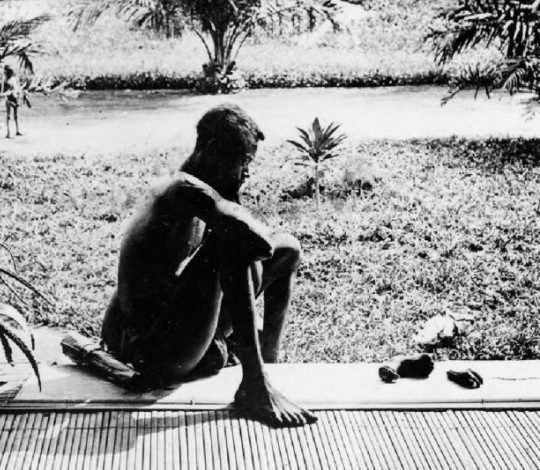
The photo above shows a man named Nsala Wala with his daughter’s hand and foot. Alice Harris, working as a missionary in the Congo, took the photo in May 1904, after he had come into her mission at Baringa with a small package containing the severed body parts. Both his wife and child had been mutilated and killed.
HOW KING LEOPOLD II TOOK POSSESSION OF THE CONGO FREE STATE
After the Berlin Conference of 1884 the 905,000 square miles of the Belgian Congo [now the Democratic Republic of the Congo] became the personal property of King Leopold II of Belgium. His genocidal exploitation of the territory, particularly the rubber trade, caused many deaths and much suffering. Murder and mutilation were common.
Dark History
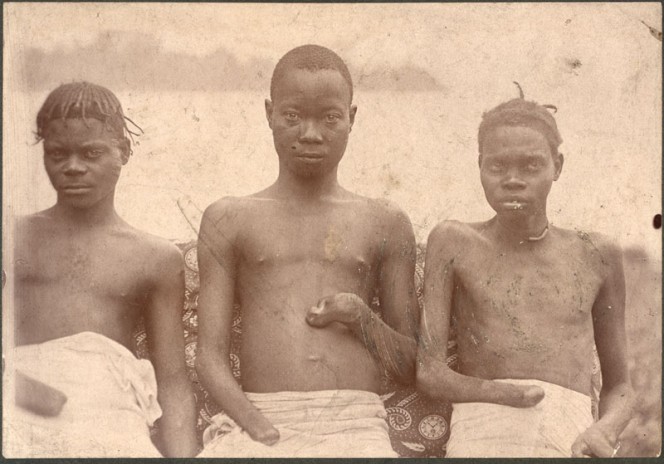 King Leopold II of Belgium ordered the mutilation of any of Congolese who did not meet their quotas of rubber or ivory. Congolese men who failed to meet the quotas had their hands chopped off as an example to other villagers to work harder. The Belgian soldiers then forced women into their forced labour and they too became victims of limb mutilation. The soldiers then forced children as young as 5 into these labour camps. The atrocities and mutilations carried out by the Belgian soldiers was conducted without the world even knowing – until Alice Harris, a Christian missionary to the Congo took the now famous photo of a father looking at the severed hands and feet of his now dead 5 year old daughter.
King Leopold II of Belgium ordered the mutilation of any of Congolese who did not meet their quotas of rubber or ivory. Congolese men who failed to meet the quotas had their hands chopped off as an example to other villagers to work harder. The Belgian soldiers then forced women into their forced labour and they too became victims of limb mutilation. The soldiers then forced children as young as 5 into these labour camps. The atrocities and mutilations carried out by the Belgian soldiers was conducted without the world even knowing – until Alice Harris, a Christian missionary to the Congo took the now famous photo of a father looking at the severed hands and feet of his now dead 5 year old daughter.
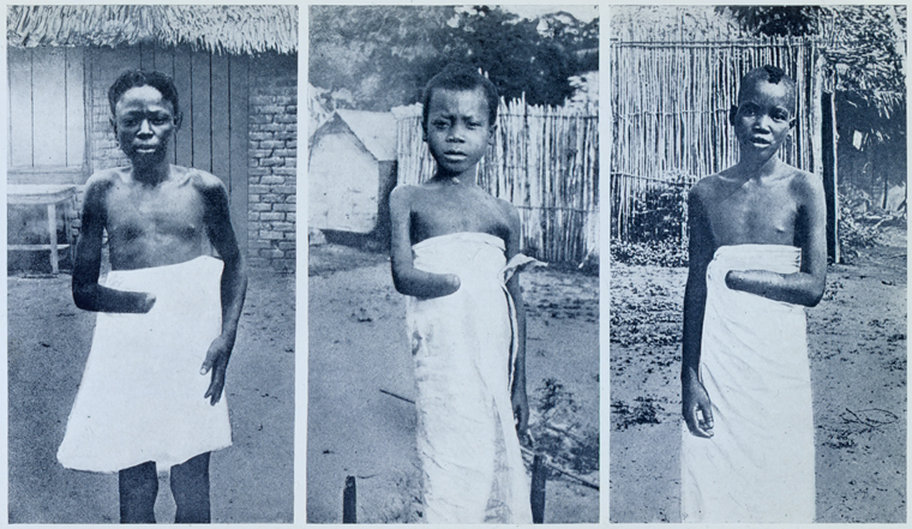
Child victims of King Leopold’s mutilation atrocities carried out against the Congelese
Alice began to campaign against the appalling human rights abuses being committed against the Congolese. Her earlier graphic photos of mutilations began to be published in 1902 in their Mission’s magazine, Regions Beyond. That same year, Alice with her husband, John, returned temporarily to England. Her photos were made into ‘magic lantern’ glass slides which enabled them to deliver ‘multi-media’ public lectures in colour drawing people’s attention to rampant injustice being perpetrated against the Congolese. In 1904 her photos were published in a pamphlet Congo Slavery. In 1906 Alice and John toured the United States conducting 200 meetings in 49 cities where they screened their Magic Lantern presentation. In December of that year, the daily morning newspaper, the New York American, published Alice’s photos every day for a week along with articles about the atrocities being committed in Congo. Within two years of this, King Leopold II relinquished control of the Congo Free State to the Belgian Government.
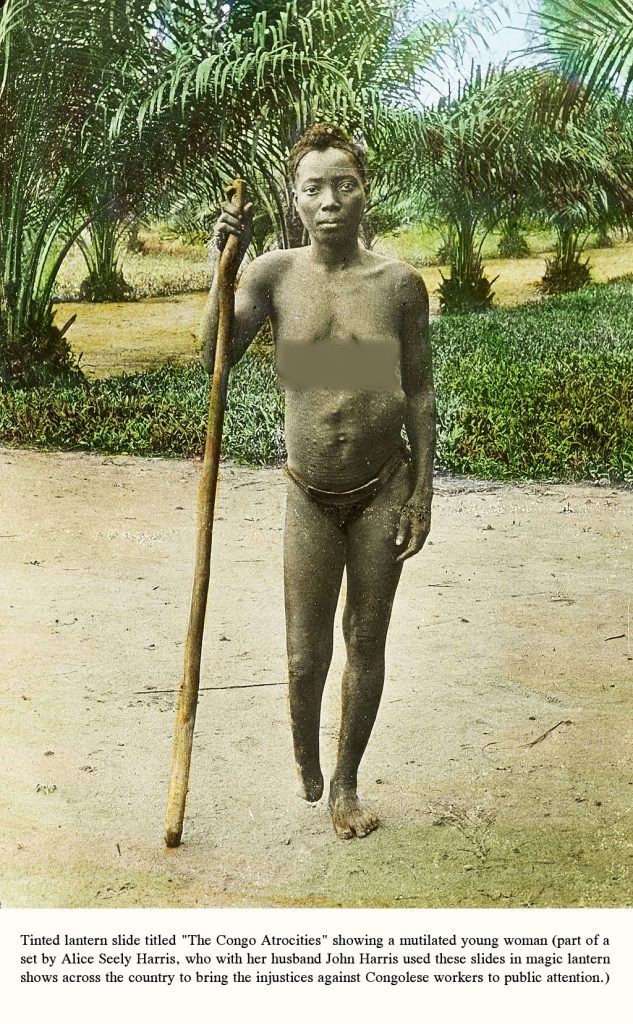
It is estimated that at King Leopold II’s direction, 10 million Congolese had been murdered in addition to those who had been mutilated. The Belgians eventually granted Congo their independence in 1959.
THE EFFECTIVENESS OF A VISUAL VOCABULARY
Nick Ut’s photo, Tom McCarthy’s movie, and Alice Harris’s photos, illustrate the effectiveness of giving the public a visual vocabulary. This does not ignore the power of the written word and the effect it has had historically in correcting injustices. It is possible for words to also add to our visual vocabulary, especially when these words are poetic or more powerful still, set to music and sung. Interestingly, some of the most powerful songs about injustice have been inspired by a photograph.
THE STORY BEHIND ‘THE SONG OF THE CENTURY’
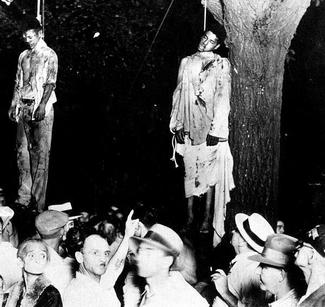 On August 7th, 1930, two innocent young black men, Thomas Shipp and Abram Smith, were lynched by a mob in Marion, Indiana. A photograph was taken of the gruesome event which showed the hundreds of people who came out to witness the event exhibiting a carnival-like glee. Sometime later, a teacher in New York named Abel Meeropol, came across the photo taken at this event (shown right) and was appalled. He wanted to do something as a protest to this barbaric vigilantism. He penned a poem called Bitter Fruit using the pseudonym, Lewis Allan, and published it in the New York Teacher. He then set the poem to music and called it Strange Fruit. A black singer, Billie Holiday, heard Meeropol, his wife and a black vocalist, Laura Duncan, perform Strange Fruit at Madison Square Garden. She was a regular performer at an integrated night club in New York called Café Society and asked the owner for permission to perform the song as closing item each night.
On August 7th, 1930, two innocent young black men, Thomas Shipp and Abram Smith, were lynched by a mob in Marion, Indiana. A photograph was taken of the gruesome event which showed the hundreds of people who came out to witness the event exhibiting a carnival-like glee. Sometime later, a teacher in New York named Abel Meeropol, came across the photo taken at this event (shown right) and was appalled. He wanted to do something as a protest to this barbaric vigilantism. He penned a poem called Bitter Fruit using the pseudonym, Lewis Allan, and published it in the New York Teacher. He then set the poem to music and called it Strange Fruit. A black singer, Billie Holiday, heard Meeropol, his wife and a black vocalist, Laura Duncan, perform Strange Fruit at Madison Square Garden. She was a regular performer at an integrated night club in New York called Café Society and asked the owner for permission to perform the song as closing item each night.
Because of the power of the song, Josephson (the nightclub owner) drew up some rules: Holiday would close with it; the waiters would stop all service in advance; the room would be in darkness except for a spotlight on Holiday’s face; and there would be no encore. During the musical introduction, Holiday stood with her eyes closed, as if she were evoking a prayer.
https://en.wikipedia.org/wiki/Strange_Fruit
Southern trees bear strange fruit
Blood on the leaves and blood at the root
Black bodies swinging in the southern breeze
Strange fruit hanging from the poplar trees
Pastoral scene of the gallant south
The bulging eyes and the twisted mouth
Scent of magnolias, sweet and fresh
Then the sudden smell of burning flesh
Here is fruit for the crows to pluck
For the rain to gather, for the wind to suck
For the sun to rot, for the trees to drop
Here is a strange and bitter crop
Strange Fruit lyrics © Warner/Chappell Music, Inc
Billie Holiday recorded this song in 1939 with Commodore Records. It sold one million copies. In 1999, Time Magazine awarded Strange Fruit – “The Song Of The Century”. And it all came about because of a photo.
Conservative estimates of how many African Americans were murdered by lynching range from the official total of 4084 up to several thousand more especially when the numbers killed by capital punishment after kangaroo court trials are factored in (Source: Equal Justice Initiative, https://eji.org/national-lynching-memorial).
Hundreds of African Americans accused of no serious crime were nonetheless lynched for a myriad “offenses,” including speaking disrespectfully, refusing to step off the sidewalk, using profane language, using an improper title for a white person, suing a white man, arguing with a white man, bumping into a white woman, insulting a white person, and other social grievances. African Americans living in the South during this era were terrorized by the knowledge that they could be lynched if they intentionally or accidentally violated any social more defined by any white person. Examples are plentiful.
https://lynchinginamerica.eji.org/report/ Tolnay and Beck, supra note 125, at 47 (quoting JAMES CUTLER, LYNCH LAW: AN INVESTIGATION INTO THE HISTORY OF LYNCHING IN THE UNITED STATES 273-74 (1905)).

Today there is a memorial garden for the victims of such lynchings in Montgomery Alabama. On display are the names of known lynching victims, selected photos of lynchings used at the time of their production to strike terror into the hearts of African Americans, and bronze statues depicting the hardship African American slaves.
Lynching was eventually outlawed in the United States in 1950. The 1930 photograph, the Abel Meeropol poem, and the Billie Holiday song each played a pivotal role in bringing it to an end.
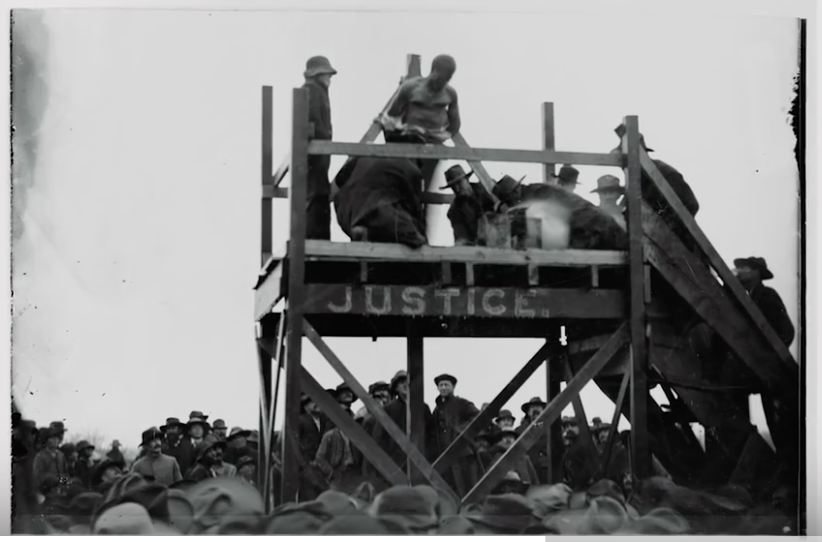 |
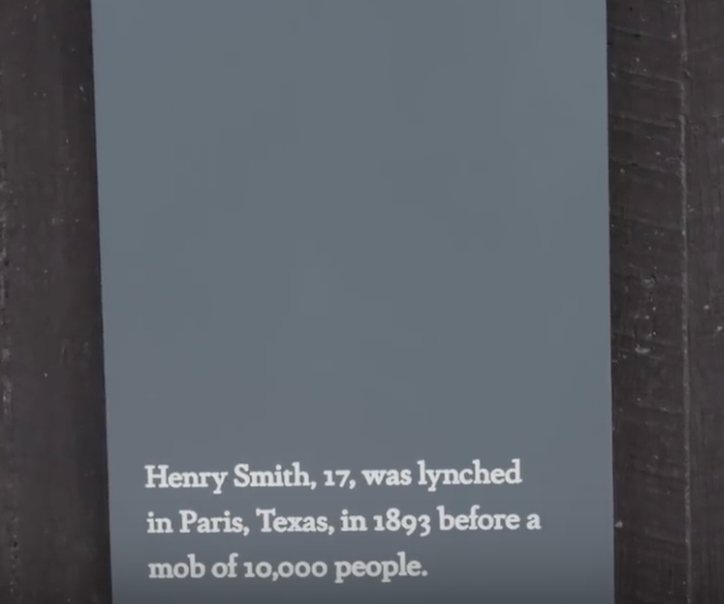 |
THE POWER OF AN IMAGE TO PERSUADE
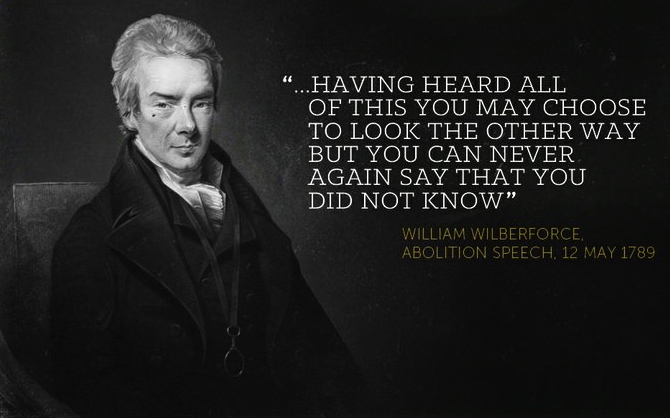 William Wilberforce campaigned tirelessly to end slavery in England. Initially he used argument and reason. This persuaded some, but not most. He then got ‘visual’ in his argumentation against slavery. Perhaps the most dramatic image that Wilberforce presented was The Madagascar (a slave ship). You can view the depiction of that moment from the 2006 movie Amazing Grace.
William Wilberforce campaigned tirelessly to end slavery in England. Initially he used argument and reason. This persuaded some, but not most. He then got ‘visual’ in his argumentation against slavery. Perhaps the most dramatic image that Wilberforce presented was The Madagascar (a slave ship). You can view the depiction of that moment from the 2006 movie Amazing Grace.
It’s not that Wilberforce abandoned reason (the primary reason he offered was that all people are equally human and each bear the imago dei – the image of God), it’s that he supplemented it with images. This included eye-witness accounts from freed African slaves, reports from investigative journalists who travelled on slave-ships, and direct evidence of inhumane treatment from former slaves. This was all countered by unreasonable arguments from those with commercial interests in the slave-trade, including –
-
“Black people are not actually human”
-
“Slavery is actually an act of kindness for these people”
-
“Black people may be human, but they are not equally human to the white person”
-
“Black people are developmentally and intellectually inferior to white people, therefore slavery is doing them a favour”
-
“White people have an inherent inalienable right as truly free people to own a black slave”
Wilberforce persisted with his campaign (1791 – 1826). Three days before his death, the British Parliament outlawed slavery on July 26 1833.
Reason plus complementary images plus persistence is still the formula for changing culture and conquering growing evil and injustice in any society.
IDEAS HAVE CONSEQUENCES, BAD IDEAS HAVE VICTIMS
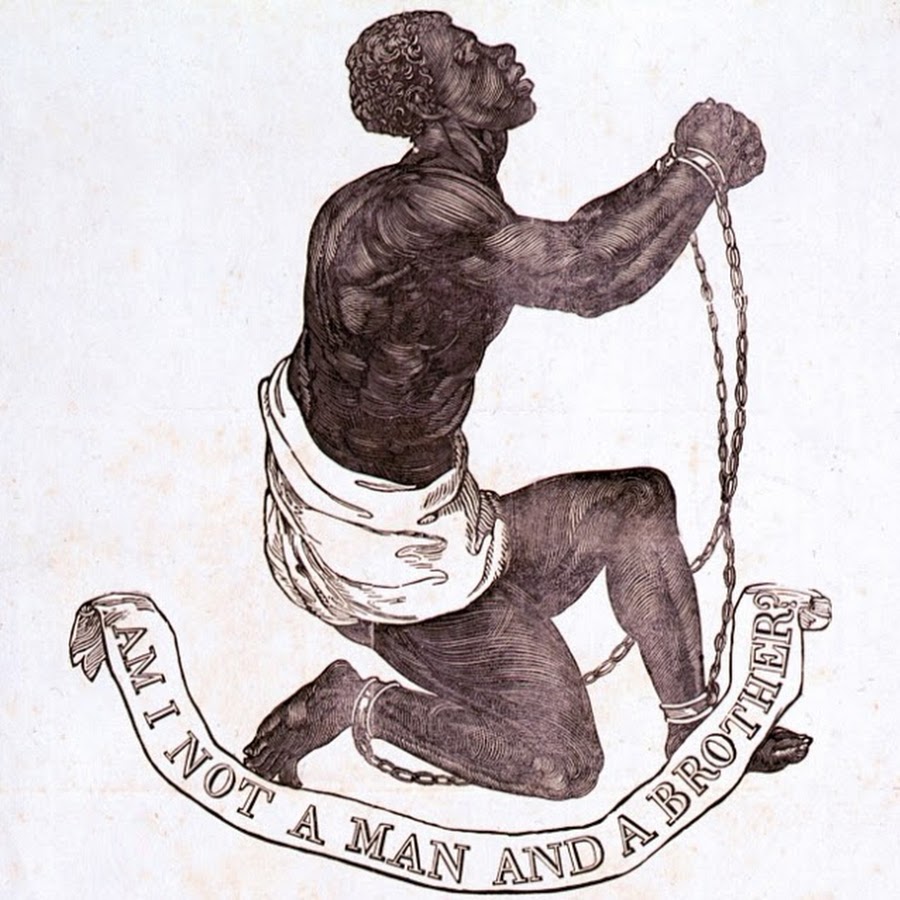 Today, we are faced with what is arguably the most tragic era of human rights abuses ever perpetrated. Its victims far outnumber the fatalities of holocausts, wars or even genocides. The insidiousness of this mass tragedy is that its victims are almost never seen or even acknowledged. I am referring to the prevalence of abortion.
Today, we are faced with what is arguably the most tragic era of human rights abuses ever perpetrated. Its victims far outnumber the fatalities of holocausts, wars or even genocides. The insidiousness of this mass tragedy is that its victims are almost never seen or even acknowledged. I am referring to the prevalence of abortion.
According to one recent Journal publication, a quarter of all pregnancies in Australia are aborted (C Rissel, J Richters, AE Grulich, RO de Visser, & A Smith, ‘Sex in Australia: attitudes towards sex in a representative sample of adults’, Australian and New Zealand Journal of Public Health, vol. 27, no. 2, April 2003, pp.118–123). It is estimated that there are at least 70,000 abortions each year in Australia. That means, on average, 191 unwanted pre-born babies are killed every day in Australia! In the United States, with a population 13 times that of Australia, on average, 2,500 abortions occur each day!
Many of the arguments put forward to condone abortion sound eerily like those used to justify slavery of Africans around Wilberforce’s time. This is a point which Rebekeh Dyer makes in her article, The Social Parallels of the America that Enslaved Blacks and the America that Kills Unborn Babies .
It helps to dull the conscience so that evil can be perversely twisted into something that is seen as “beneficial for society” by so many people. Slaveholders argued that the institution of slavery benefited the slave because it spared him from something worse. They masked their evil by saying they wanted to prevent the slave from possessing something he/she was not equipped to handle: freedom. I’m sure you have heard the statement, “Every child a wanted child”. Abortion advocates claim that we need to spare children from pain, poverty, and medical challenges in the future so we should end their lives by abortion. They say we should not allow an “unwanted” child to be born. Ending their lives is “benefiting” the children, women, and society, because it is supposedly preventing harm in the future that would be too difficult and burdensome to bear. History has repeated itself.
Slavery advocates argued that blacks were intellectually and physically inferior to whites. Now some argue that the fetus is not valuable because it cannot function intellectually/mentally on the same level as another human. As for the physical aspect, if you are small, dependent, and less developed, then you are inferior in this country.
Rebekeh Dyer, https://lti-blog.blogspot.com/2018/03/the-social-parallels-of-america-that.html
There is no doubt among Embryologists, that a human embryo is a human person since humans are not ‘assembled’ in the womb, they develop. That is, every required piece of genetic information necessary for an embryo to develop into an adult is present in the embryo. Our humanity is not dependent upon our size, level of development, environment, or dependency (SLED). While this is a reasonable argument, it doesn’t persuade everyone. This is why supplementing this argument with appropriate images makes this reasoning even more compelling. Abortion placards with slogans like, “My body – my rights!” presents aborting a baby as being morally equivalent to extracting a tooth. But this view seems to change dramatically when there is a wider visual vocabulary.
Dr. Megan Best, a Research Fellow at Sydney University, who specialises in the ethics of end-of-life issues, states with grave concern, “Abortion has become so common in our society that what is involved is rarely discussed” (Oxygen18, Speaker Profile). Not only is what is involved rarely discussed, it is not being seen either.
Scott Klusendorf, of the Life Training Institute, argues that the case for protecting the unborn must be a complement of both reason and images. In his experience, people often dismiss the reasons for the humanity of the unborn until they view images of aborted ‘foetuses’. This is the visual vocabulary missing in this discussion we are not having as a society.
We are not against women or their rights. But no-one has the right to unjustly take the life an innocent human being – regardless of their size (even if it is just a few millimetres), or their level of development (a baby’s heart begins beating from 5 weeks after conception), or their environment (even if it is a womb), or their dependency level (including being attached to a placenta for 9 months). If you’re up to it, click on the photo icons below to view what is missing in this discussion. The next time you’re in debate with an abortion advocate, ask them for permission to establish a visual vocabulary for what you’re both discussing. It is difficult to imagine that anyone viewing the images supplied could not be compelled to acknowledge that abortion unjustly takes the life of an innocent human being.
 Aborted at 10 weeks |
 Aborted at 24 weeks |
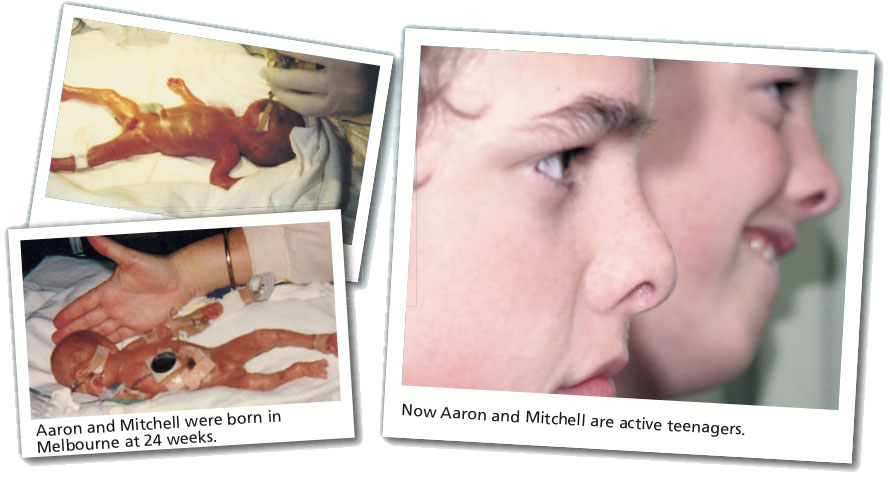 Not aborted but birthed at 24 weeks |
Dr. Andrew Corbett
-
Sale!

5 Things We Need To Do To Break Our Church’s 200 Barrier, Premium Audio
Original price was: $1.75.$0.95Current price is: $0.95. -
Sale!

A Morning With Izaak Walton – The Compleat Man, Premium Audio
Original price was: $1.75.$1.25Current price is: $1.25. -
Sale!
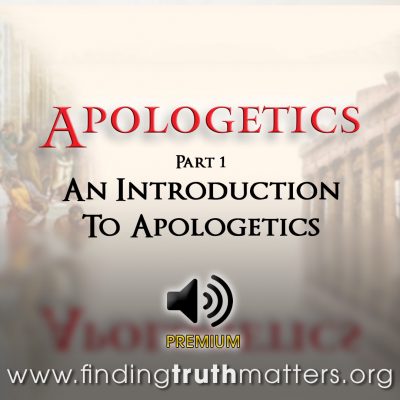
Apologetics Part 1 – Introduction To Apologetics, Premium Audio
Original price was: $1.75.$0.95Current price is: $0.95. -
Sale!
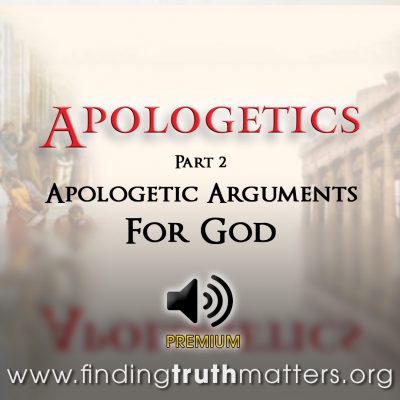
Apologetics Part 2 – The Apologetic Arguments For God, Premium Audio
Original price was: $1.75.$0.95Current price is: $0.95.
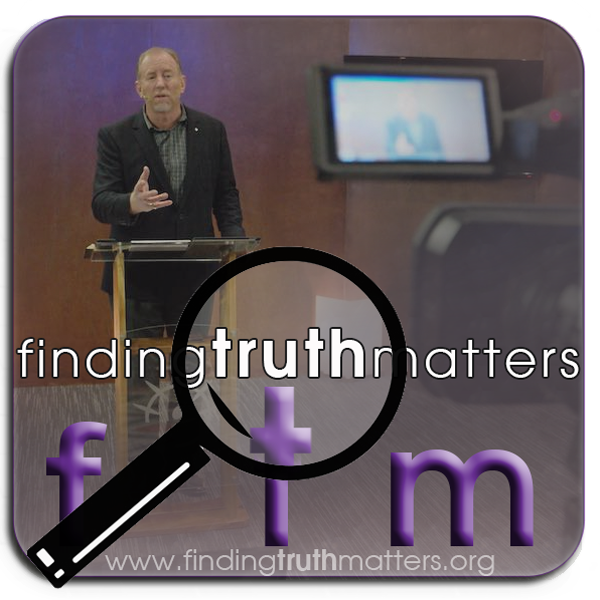








































0 Comments